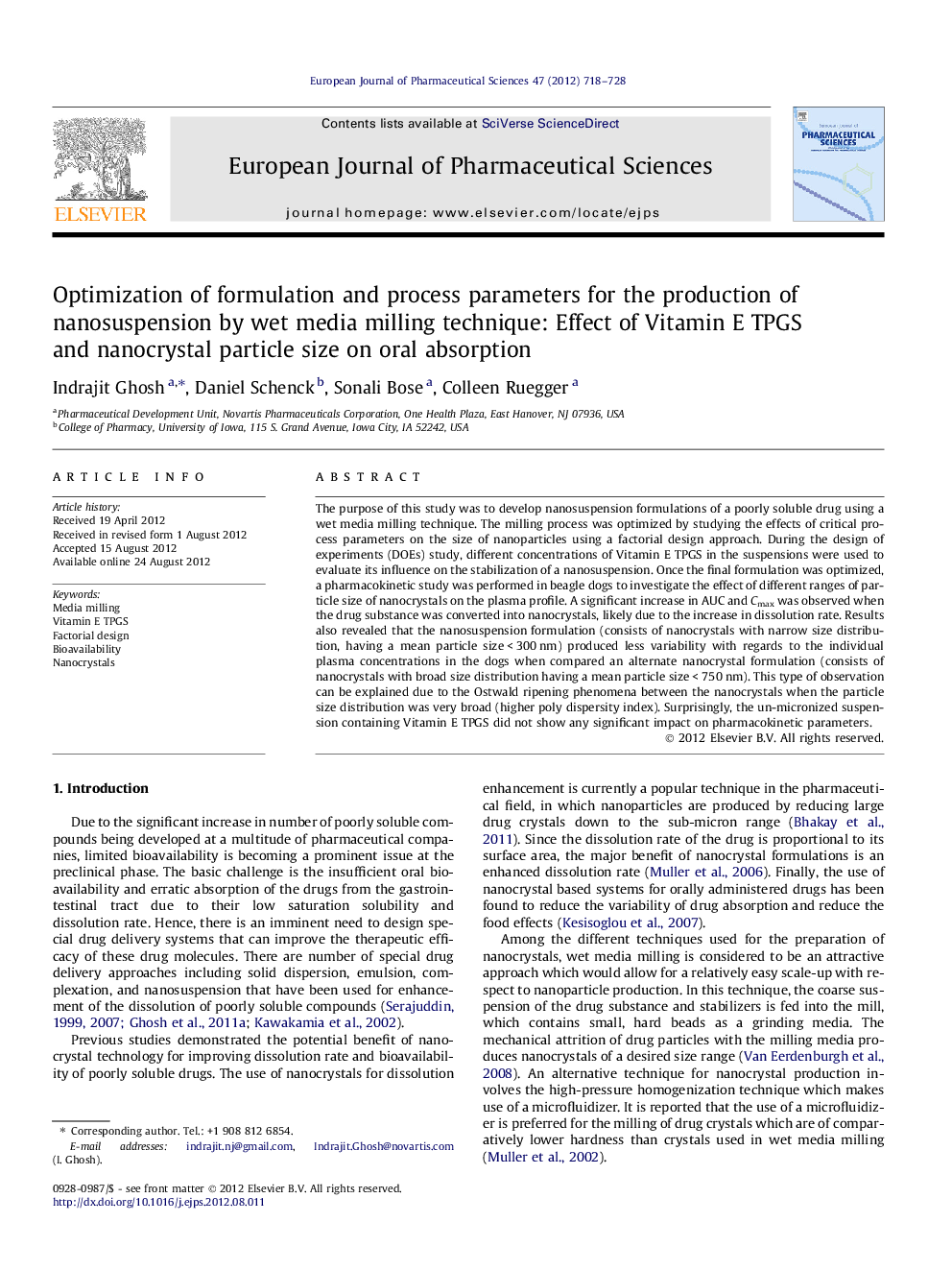| Article ID | Journal | Published Year | Pages | File Type |
|---|---|---|---|---|
| 2480925 | European Journal of Pharmaceutical Sciences | 2012 | 11 Pages |
The purpose of this study was to develop nanosuspension formulations of a poorly soluble drug using a wet media milling technique. The milling process was optimized by studying the effects of critical process parameters on the size of nanoparticles using a factorial design approach. During the design of experiments (DOEs) study, different concentrations of Vitamin E TPGS in the suspensions were used to evaluate its influence on the stabilization of a nanosuspension. Once the final formulation was optimized, a pharmacokinetic study was performed in beagle dogs to investigate the effect of different ranges of particle size of nanocrystals on the plasma profile. A significant increase in AUC and Cmax was observed when the drug substance was converted into nanocrystals, likely due to the increase in dissolution rate. Results also revealed that the nanosuspension formulation (consists of nanocrystals with narrow size distribution, having a mean particle size < 300 nm) produced less variability with regards to the individual plasma concentrations in the dogs when compared an alternate nanocrystal formulation (consists of nanocrystals with broad size distribution having a mean particle size < 750 nm). This type of observation can be explained due to the Ostwald ripening phenomena between the nanocrystals when the particle size distribution was very broad (higher poly dispersity index). Surprisingly, the un-micronized suspension containing Vitamin E TPGS did not show any significant impact on pharmacokinetic parameters.
Graphical abstractFigure optionsDownload full-size imageDownload high-quality image (194 K)Download as PowerPoint slide
